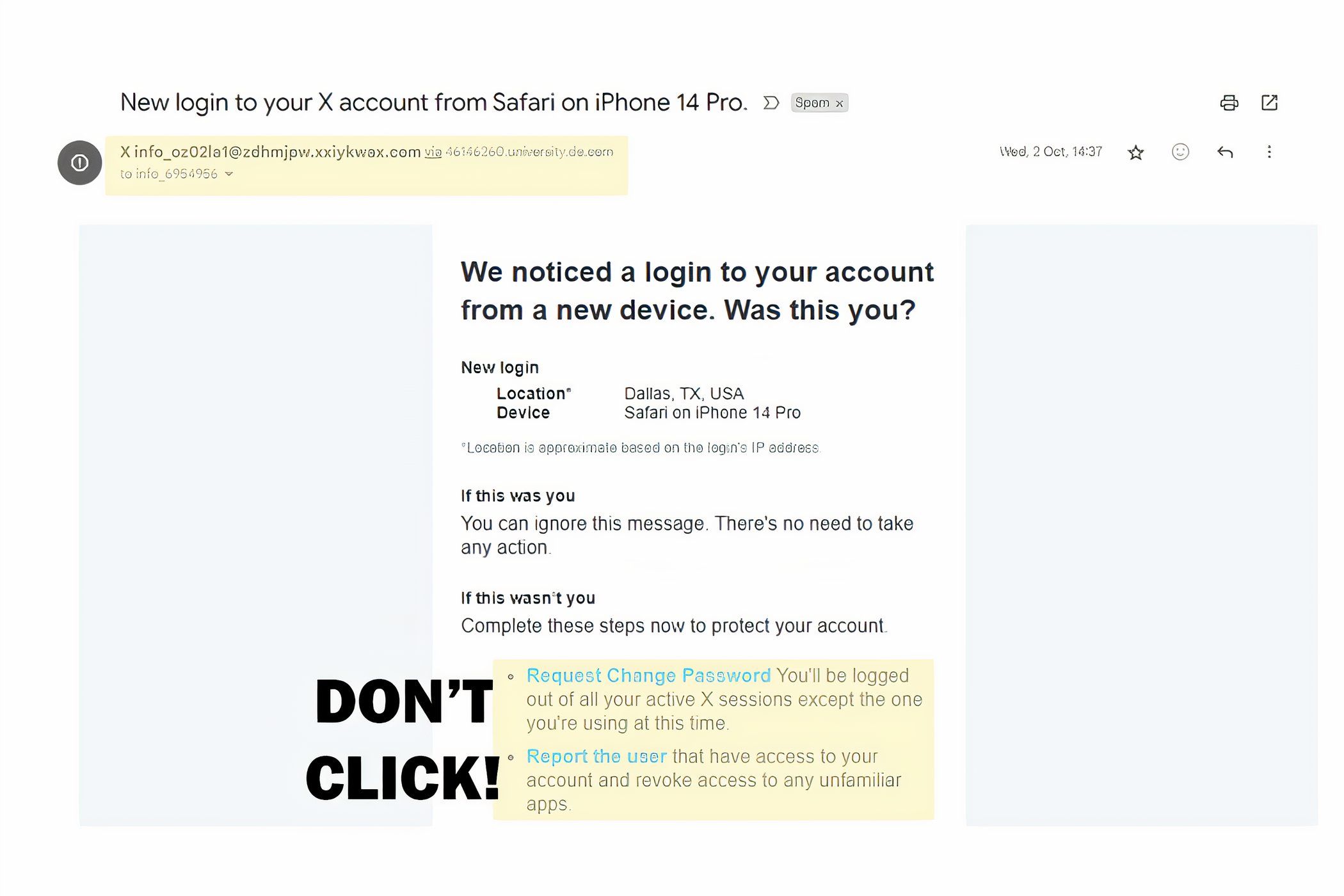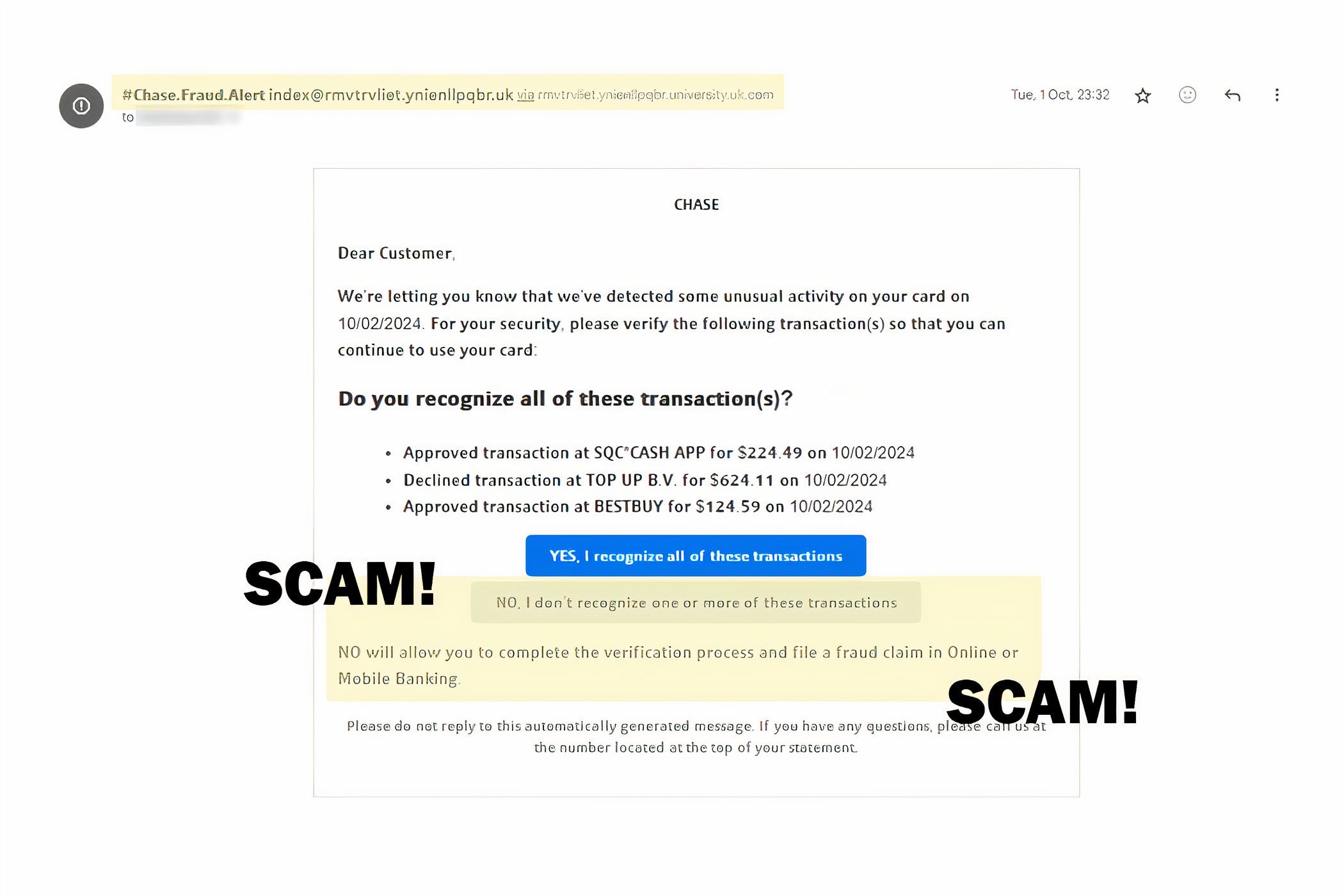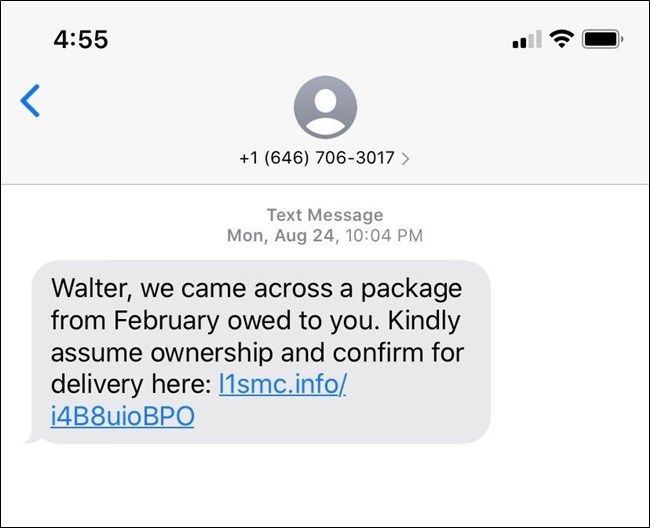Black Friday is a great time to buy stuff you want at a discounted price, but it’s also a very popular time for scammers to try and bait you out of your money with phishing emails. To keep you and your money safe, look out for these telltale signs of an email scam this holiday season.
Do You Recognize the Company or Person Sending the Email?
The first step to spotting an email scam is the sender’s address: make sure the sender’s address isn’t suspicious. If you don’t recognize the company name or the individual, it should be a red flag. Does it contain odd stringers of letters or numbers?
Of course, with how easy it is for companies to get our data these days, it is possible to get an email from a company that has never emailed you before, but if the sender is brand new, the least you should do is be a bit wary of the email as you open it.
A healthy level of suspicion is the first defense against scams, but don’t worry: there are plenty of other signs to look out for when it comes to email scams.
Did The Email Come From a Public Domain?
Almost every company or corporation worth trusting has a business email unique to them. They will not be sending you real, professional emails via public domains like Gmail or Yahoo. Even Google doesn’t send legitimate emails to people through Gmail. Outside of extremely small companies, they will almost always have custom email names and accounts. Google, for instance, sends emails from a “@google.com” domain.
So, a good way to catch an email scam is to see if the domain matches the alleged sender. For example, if you get an email from PayPal, a legitimate email isn’t going to come from Gmail, Yahoo, or AOL. If you get an email from a public domain like that, allegedly from a legitimate business, there’s a very high chance that the email is a scam.
Did You Do Something to Warrant the Email?
Unfortunately, there are many ways for companies to get our data today. So, even if you don’t give your information to a company willingly, it’s possible for them to contact you sometimes. However, you shouldn’t normally be getting emails from a company unless you’ve actually done something to get on their mailing list.
For instance, maybe you signed up for a rewards program or a newsletter. Perhaps you gave your email address to a website when you purchased something from them online. Generally speaking, you will have done something to warrant getting an email from a business, so if you get an email from a company you’ve never interacted with before, that you’ve probably never willingly given your information to before, you should be alert for a scam.
This is especially important to keep in mind when it comes to emails claiming that you bought something and have a bill to pay. If you know you didn’t buy anything from the alleged company asking you for payment in the email, it’s almost definitely a scam. Be extremely wary of any email that is asking you to pay money. After all, money is what scammers are almost always after.
Does the Email Contain Suspicious Links or Attachments?
Generally, an email scam is trying to infect you with malware or steal your information, especially your bank info. How they get you to do this varies, but it most often involves a link or attachment that delivers malware or takes you to a web page asking for your info. For instance, a scammer may send an email containing an “invoice” for some sort of service you allegedly paid for in the form of an attachment.
Naturally, you’ll be confused, wondering what the heck that invoice could possibly be for, so you click on the attachment and bam, malware on your computer. Unfortunately, it can be a bit difficult to tell at a glance that a link or attachment is carrying malware. It’s really more about finding the rest of the email suspicious enough to know that everything else it holds is risky as well.
To that end, never click on a link or attachment if you aren’t certain that you can trust the sender. Even then, it’s a good idea to contact the sender directly or go to the link by copy and pasting it into your browser just to be safe. There are a few signs you can look out for on top of this, though: if your computer gives you a warning about the link or attachment, or you area asked to make changes to your computer setting before you can open them, those are both big red flags.
Is the Email Unprofessional or Poorly Written?
Far be it from me to claim that every legitimate company out there is incapable of making a typo in their emails. But generally speaking, companies will go to great lengths to ensure their emails are written professionally. They have an image to maintain, after all. To this end, there are a few things you can potentially pick out of a scam email that might give it away.
First of all, the email may be poorly written. Scammers often aren’t professional writers, and are more likely to make mistakes when crafting their scam email. Furthermore, a lot of scams come from other countries that don’t primarily speak English, and there may be indications of that as well. You aren’t going to get an email from Lowe’s written to you in that kind of language.
Businesses also tend to speak like a business when they send you an email. A legitimate email is rarely going to sound like a casual text from your friend or a solicitor. If you’re ever reading an email, and you get the feeling that it’s unprofessional or way too casual to be from a legitimate business, it might be a good idea to trust your gut.
Because lots of people are looking to spend money during Black Friday sales, scammers are on the prowl, with more nefarious schemes than ever. There are many ways for you to stay safe from them, including keeping your trusted antivirus software up to date, but at the end of the day, there’s no substitute for your own vigilance. And remember, these tips apply to scam messages and social media posts too!







